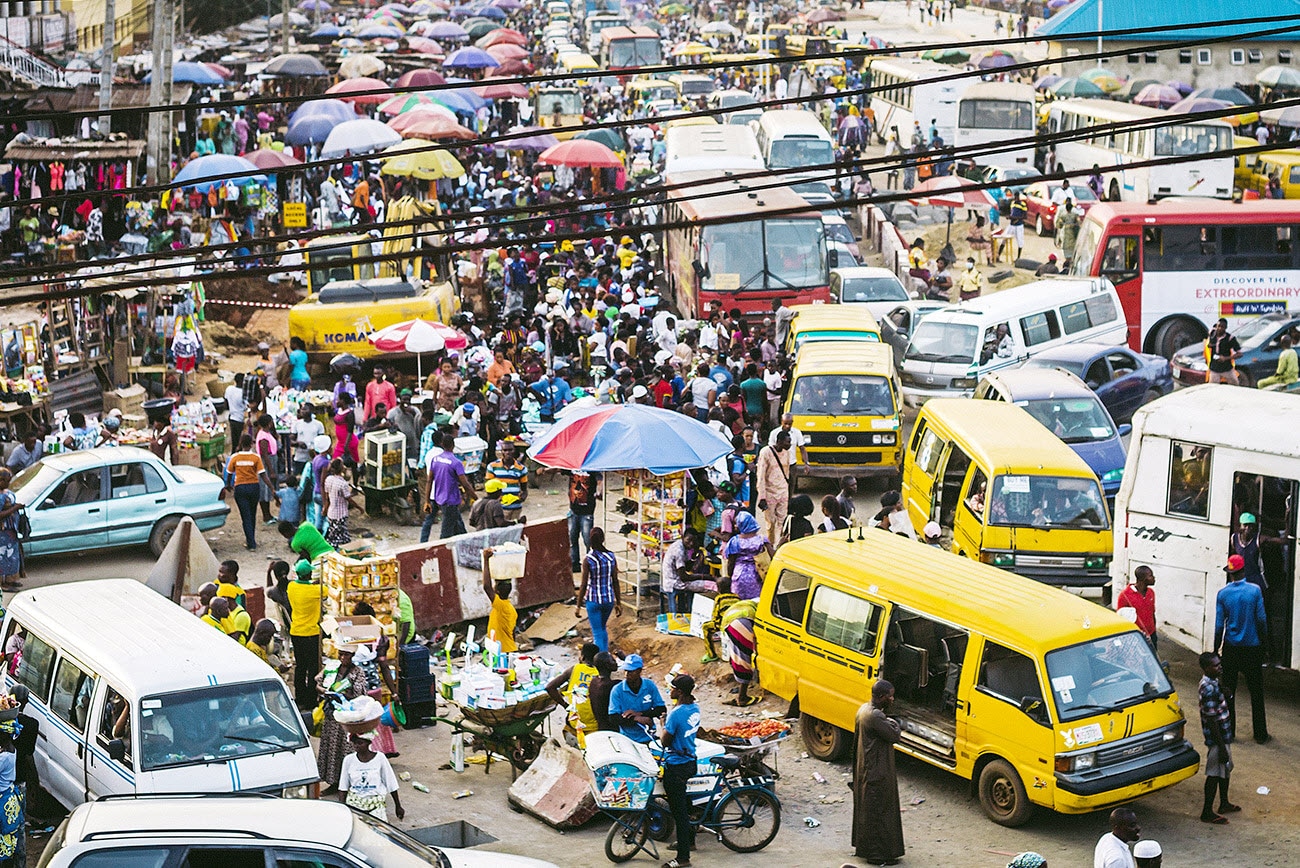Africa’s population is exceptionally young compared to other world regions that have been aging at a fast rate: only 5.6% of Africa’s population was
Africa’s population is exceptionally young compared to other world regions that have been aging at a fast rate: only 5.6% of Africa’s population was age 60 or older in 2020 compared to 23.4% in North America and double-digit percentages in every other world region.
Even by 2050, Africa’s older population is projected to remain in single digits, less than 1 in 10 (9.3%). That will still be lower than the current rates for other regions.
Then why do we need to study aging in Africa now?
A U.S. Census Bureau report, Africa Aging: 2020, looks at the implications of population aging for Africa and its sub-regions and countries, now and in the future.
The report presents reasons why it’s imperative to study aging in Africa now. It can help guide government policies and social and economic development in the region.
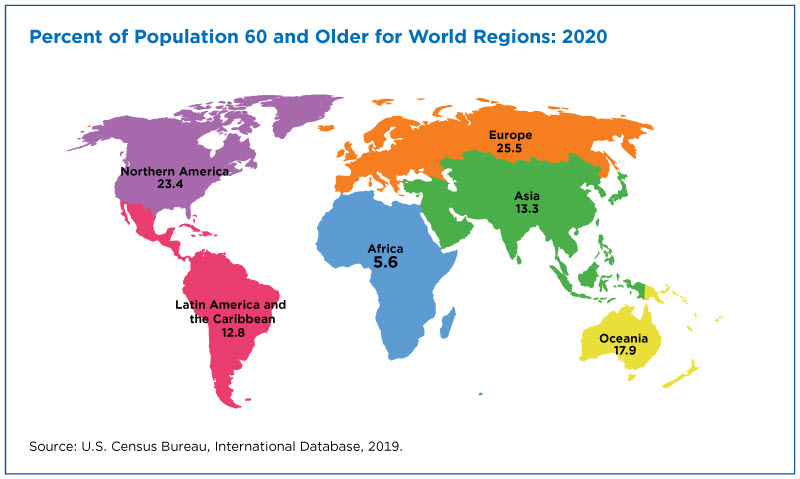
Small Share, Large Numbers
One reason is that even though the share of older adults in Africa is small, it still translates into an enormous number of people.
Focusing strictly on the proportion of older people masks the remarkable and ever-increasing absolute size of the older African population and its impact on the region’s development.
Based on estimates and projections from the Census Bureau’s International Database, Africa had the fewest older people of any world region: 74 million in 2020.
But, by 2050, the older African population is projected to total 235 million, surpassing that of Latin America and Northern America and approximating that of Europe.
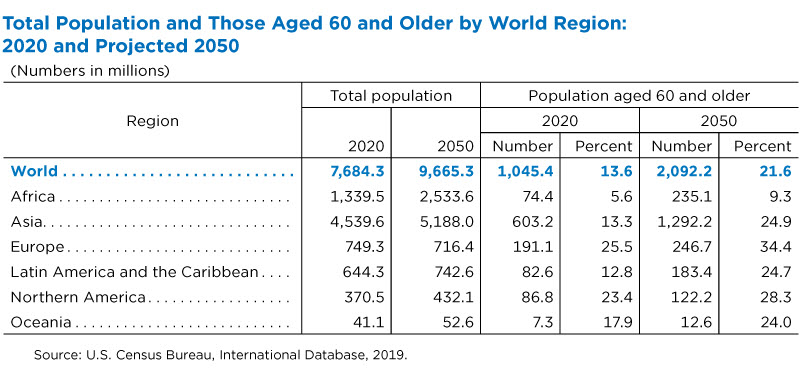
In 2020, 18 African countries each had more than 1 million people ages 60 and older.
In 30 years, the number of African countries with more than a million older adults is projected to rise to 36 and seven of them will each have at least 10 million older adults.
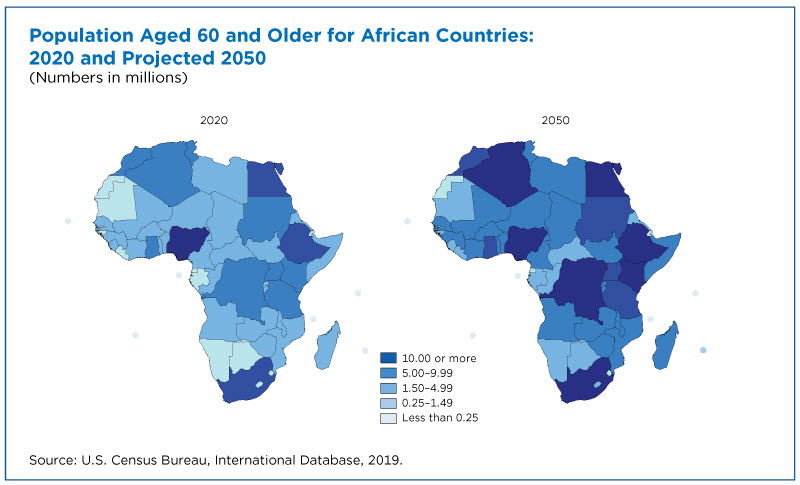
For example, Nigeria in Western Africa, is Africa’s most populous country. It had the largest older population of any African country in 2020 (11 million, or 19th in the world); in 2050, it’s projected the number of older Nigerians will triple to more than 33 million to become the world’s 11th largest older population.
Projected Rapid Growth of Africa’s Older Population
The growth in the number of older Africans is set to exceed 200% in the next 30 years, far outstripping growth of older populations in other regions, especially Europe.
It’s projected the older population of Europe, currently the world’s oldest region (25.5% ages 65 and over), will climb less than 30% in the same time span.
The trajectory of the growth of Africa’s older adults is even more noteworthy. It’s projected Africa will be the only region to experience a consistent increase every successive decade between 2020 and 2050.
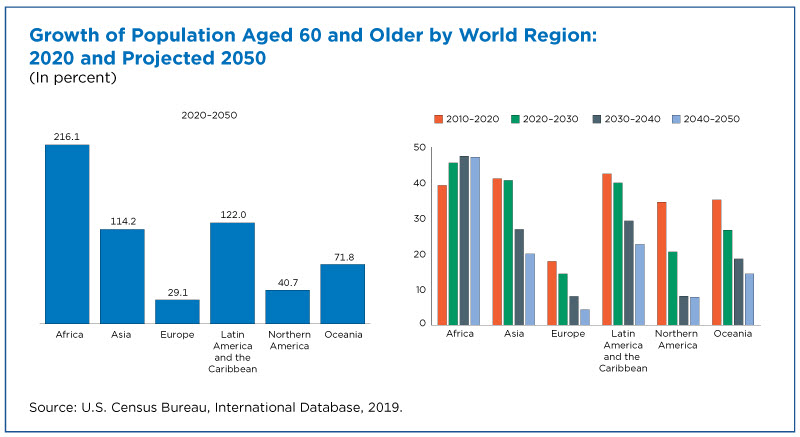
Major Impacts on Youth
There were 538 million African children under age 15 in 2020 — a ratio of 1.6 African children for every American of any age.
Three population pyramids below illustrate the impact of high fertility or low fertility on a country’s age-sex structure. When couples have fewer children, the society’s age structure changes and the base of the pyramid narrows and the top widens.
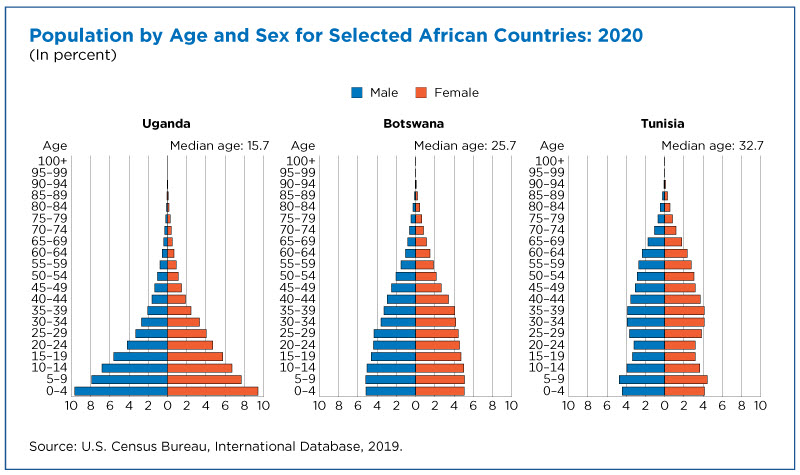
Representative of many sub-Saharan African countries with high fertility levels, Uganda in Eastern Africa has an age and sex distribution that shows a perfect traditional pyramid shape, indicating an extremely young age. Its median age is a very low 15.7. That means half the country’s population are children ages 15 or younger.
In contrast, Tunisia in Northern Africa has experienced fertility declines. Its median age of 32.7 is similar to that in some Asian or Latin American countries where the population is aging at a fast pace.
Africa’s Societal Support Burden
Another measure of the ramifications of Africa’s growth in child population is a frequently used indicator: dependency ratios.
This indicator estimates the balance between the working-age population and the older and younger populations that “depend” on them.
In 2020, Africa had the highest total dependency ratio of any world region: every 100 people ages 15 to 59 were supporting 82 young and older people combined.
More telling is the makeup of the dependency ratio in Africa: 88% of the support burden came from children and only 12% from older people.
Europe also had a relatively high total dependency ratio (70) but in the opposite direction: only 38% of the dependents were children and 62% older people.
Fertility Decline in Sub-Saharan African Countries
Population aging is propelled mainly by falling birth rates, along with falling death rates. Sub-Saharan Africa’s fertility decline started later than in other parts of the world and even stalled in some countries.
However, as a result of improvements in women’s education, strengthened family planning programs and wider use of contraception among urban women, the number of African countries with a total fertility rate of 4.0 or above is projected to decrease from 28 in 2020 to only 2 by 2050.
In other words, in a generation’s time, almost one-third of African countries will be at the current fertility levels of Asia and Latin America, which will trigger major changes in their age structures.
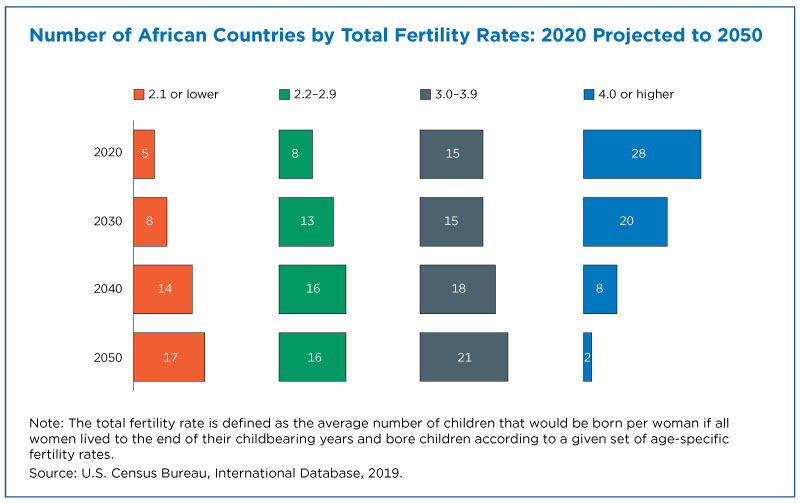
Demographic Impact on Economic Development
Africa’s aging presents challenges but also opportunities.
A decline in a society’s fertility and mortality can result in a changed age structure. The large number of children born in decades earlier becomes an expanding population of working-age adults.
As a result, societal support burden for children decreases. Many countries in sub-Saharan Africa are positioned to reap this potential benefit from demographic changes in order for accelerated economic growth to take place.
Meanwhile, older adults can represent a valuable resource in Africa’s pursuit of rapid economic development and improved living standards.
Window of Opportunity
The demographic dividend is time-sensitive and could be temporary. When a society’s age structure becomes older, the total dependency ratio rises and the old-age dependency may exceed the support burden for children.
Demographers see a window of opportunity for economic development in Africa now, before many countries in the region become older.
This research was supported in part by the National Institute on Aging.
Resources : https://www.census.gov


